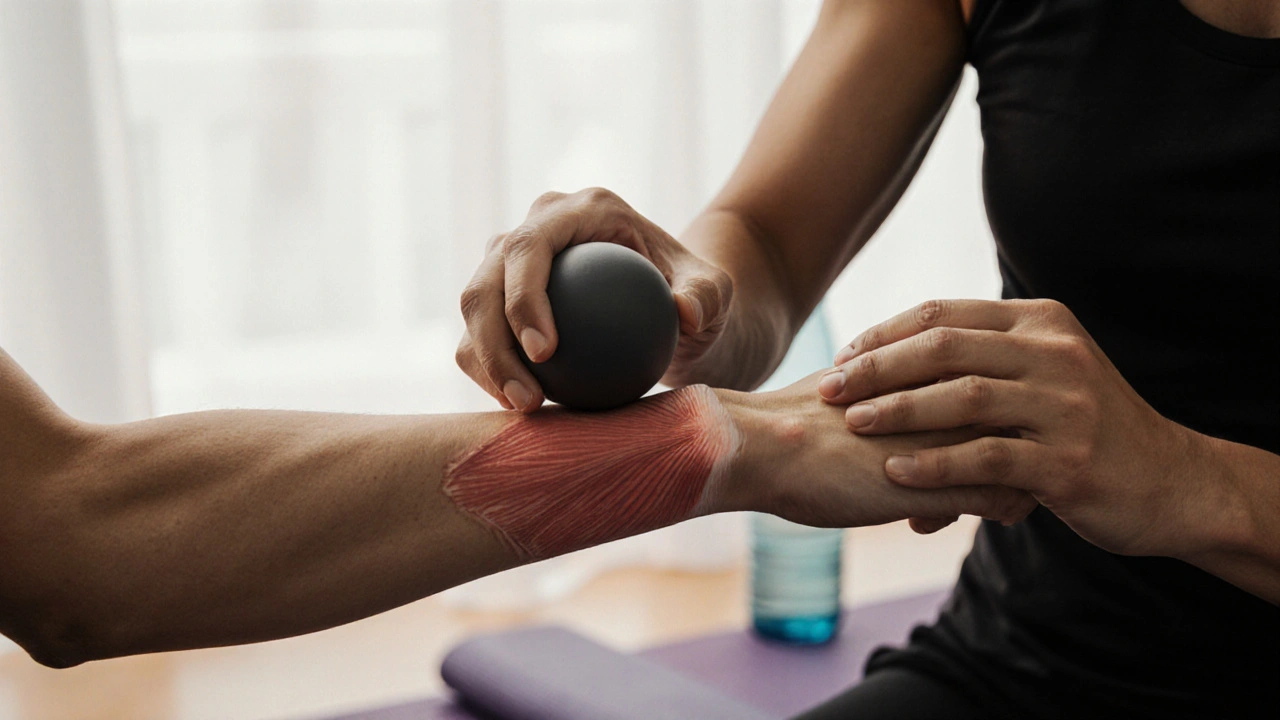Fascia Release: How Myofascial Therapy Relieves Pain and Restores Movement
When you feel stiff, achy, or stuck—like your muscles won’t loosen no matter how much you stretch—you’re not just dealing with tight muscles. You’re likely dealing with your fascia, the web-like connective tissue that wraps around every muscle, bone, nerve, and organ in your body. Also known as myofascial tissue, it’s meant to slide and stretch, but trauma, poor posture, or injury can make it stick like glue. That’s where fascia release, a hands-on technique that applies sustained pressure to break up adhesions in the fascia comes in. It’s not magic. It’s physics and biology working together to restore natural movement.
Think of fascia like plastic wrap stretched over a bowl of fruit. If it gets wrinkled and stuck in one spot, the whole thing pulls unevenly. That’s what happens in your body. A tight spot in your lower back can pull on your hip, your knee, even your foot. myofascial release therapy, a targeted form of soft tissue therapy that uses slow, deep pressure to release these restrictions helps untangle those knots. It’s different from a regular massage. You won’t get rubbed down—you’ll get held. Practitioners apply steady pressure for 90 seconds or more until they feel the tissue soften. That’s when the real change happens.
People turn to fascia release for chronic pain, headaches from neck tension, plantar fasciitis, or even after surgery when scar tissue forms. Athletes use it to recover faster. Office workers use it to undo the hunch from years at a desk. It doesn’t fix everything overnight, but it does reset how your body moves. And it works best when paired with movement—walking, stretching, breathing. You can’t just get treated and expect to stay loose. Your fascia remembers tension. You’ve got to keep it moving.
What you’ll find in the posts below are real, practical guides on how fascia release works in practice. From the science behind why it helps with pain, to how to do it yourself with a foam roller, to how professionals use tools and hands to unlock tight tissue—you’ll see what actually works. You’ll also find related techniques like Rolfing, craniosacral therapy, and myofascial release therapy that build on the same principles. No fluff. No hype. Just clear, usable info from people who’ve seen the results firsthand.

Unlocking the Mysteries of Hellerwork Bodywork Therapy
Hellerwork bodywork therapy combines deep fascial release, movement education, and emotional dialogue to realign the body with gravity. Unlike massage, it creates lasting structural change for chronic pain, posture issues, and emotional tension.

Boost Your Recovery Process with Cross Fibre Release
Cross fibre release is a targeted therapy to break down scar tissue and adhesions, speeding up muscle recovery. Learn how to use it safely at home for chronic tightness, tendinitis, and old injuries.

Why Myofascial Release Therapy Could Be Your Answer to Chronic Pain
Myofascial release therapy targets tight connective tissue to relieve chronic pain that doesn't respond to traditional treatments. Learn how it works, who benefits, and how to find the right practitioner.

Myofascial Release Therapy: How It Relieves Chronic Pain and Why It’s Gaining Traction
Myofascial release therapy targets tight connective tissue to relieve chronic pain that other treatments miss. Learn how it works, who benefits most, and how to find a qualified therapist in Australia.

Demystifying Fascia Stretching: What It Is and How It Helps
Fascia stretching releases tight connective tissue to improve mobility, reduce pain, and enhance movement. Learn how slow, sustained stretches-not quick pulls-can transform stiffness and help you move better every day.
Categories
- Health and Wellness (148)
- Alternative Therapies (80)
- Massage Therapy (40)
- Travel and Culture (14)
- Beauty and Skincare (9)
- Holistic Health (8)
- Health and Fitness (5)
- Spirituality (5)
- Other (2)
- Personal Development (2)
Popular Articles



